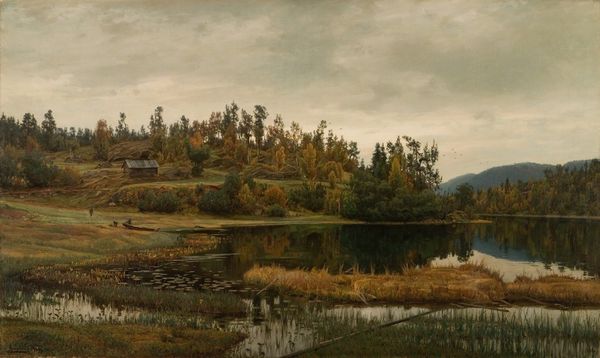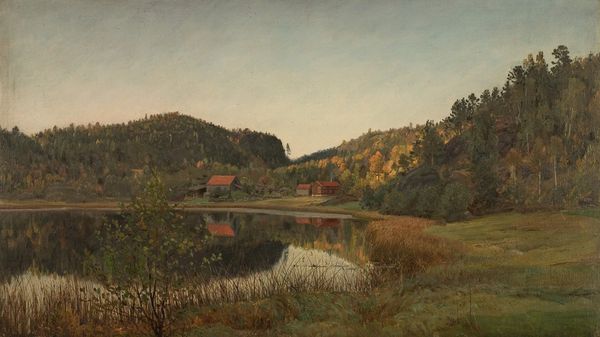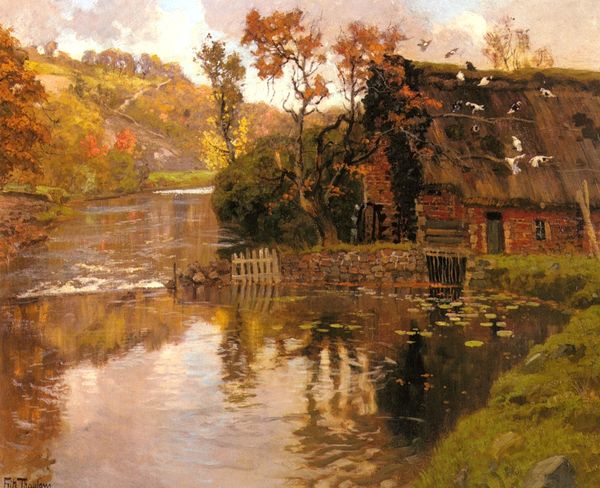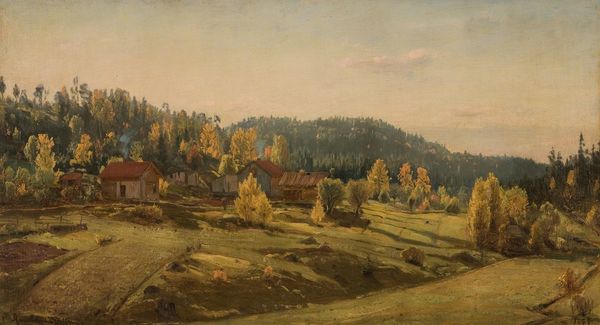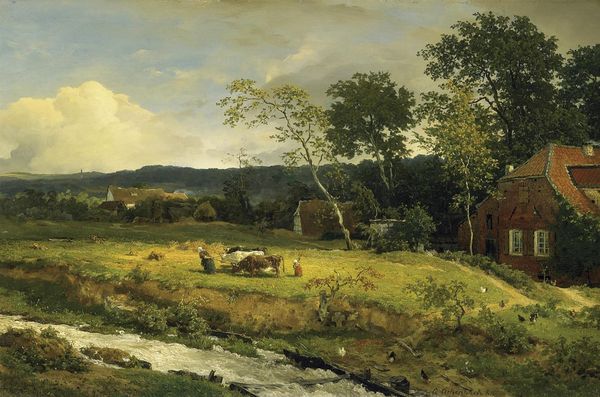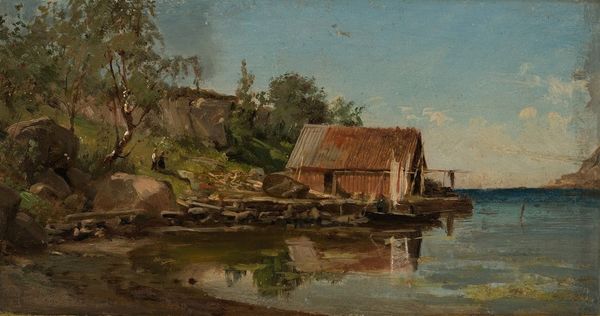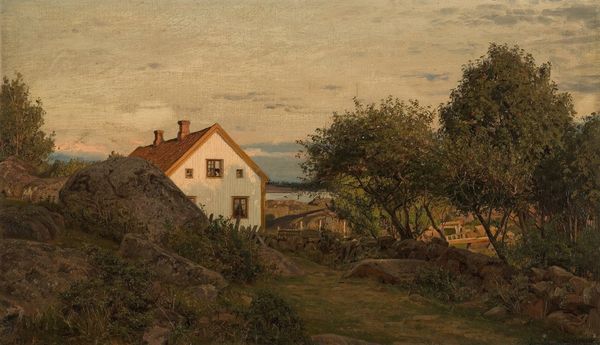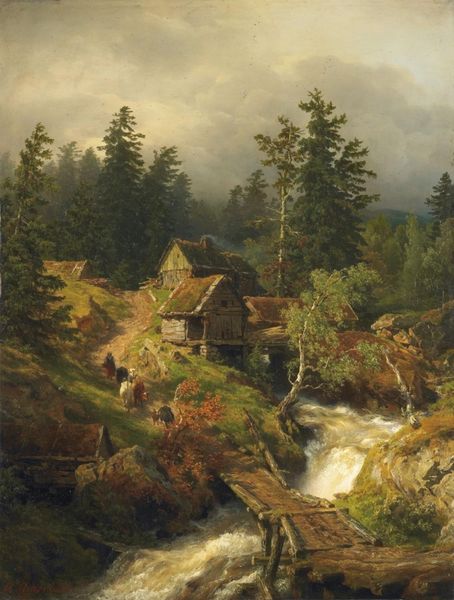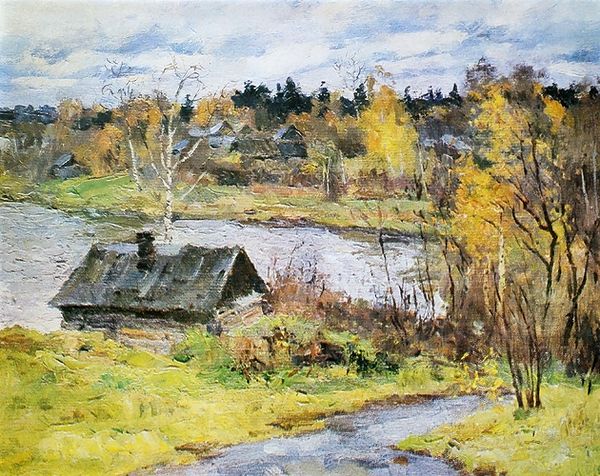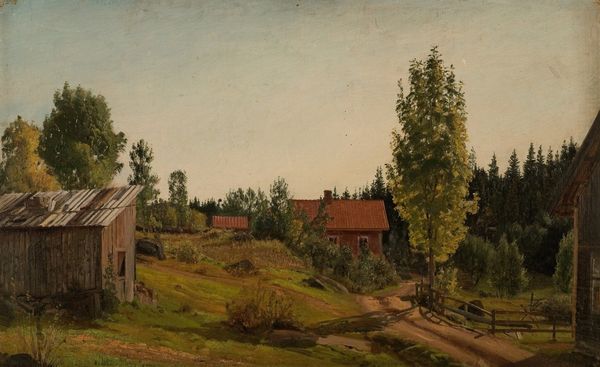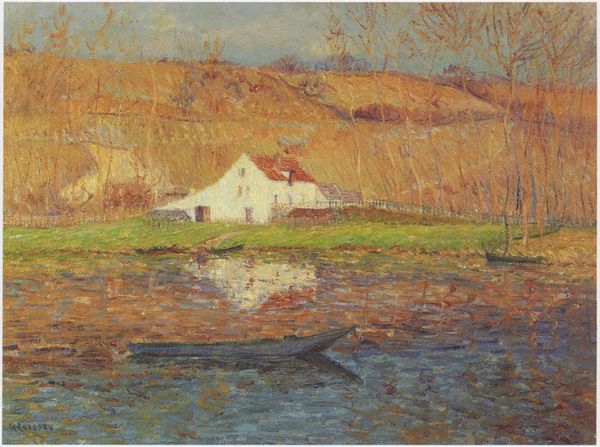
plein-air, oil-paint
#
impressionism
#
plein-air
#
oil-paint
#
landscape
#
impressionist landscape
#
oil painting
#
realism
Copyright: Public domain
Editor: Here we have Kitty Lange Kielland’s "Efter Solnedgang," or "After Sunset," painted in 1885. It’s an oil painting depicting a serene landscape, almost dreamlike. What do you see in this piece? Curator: I see a landscape imbued with a powerful sense of place, but also a subtle commentary on gender and artistic expression in 19th-century Norway. Kielland, as a woman artist navigating a male-dominated art world, chose the landscape genre, which, while seemingly neutral, offered a space for her to assert her vision. Consider the way the light reflects; it isn’t just pretty. It suggests a specific time, a fleeting moment, something not unlike women’s fleeting access to social equity during that era. Editor: That’s fascinating! I hadn’t considered that the choice of landscape could be a commentary in itself. Does the "After Sunset" title have any particular relevance to this reading? Curator: Absolutely. The setting sun could symbolize the end of established social orders and the burgeoning opportunities for women to enter previously restricted domains. What’s implicit in this composition? Note the subdued palette— is this melancholic resignation, or patient waiting? How might feminist theory help decode Kielland’s choice of a tranquil, almost passive scene? Does the rower invite us to consider movement and agency? Editor: Now that you mention it, there is that figure in the boat. Perhaps the quiet stillness is deceptive. It’s easy to overlook how groundbreaking it was for Kielland to achieve recognition. Curator: Precisely. This is an image about the intersection of environment, perception, and societal constraints. Editor: It’s amazing how much deeper my understanding is now. It's much more than just a pretty picture. Curator: Exactly, art becomes truly interesting when it's read with an eye to broader narratives, no? Thanks for sharing your insights!
Comments
No comments
Be the first to comment and join the conversation on the ultimate creative platform.
